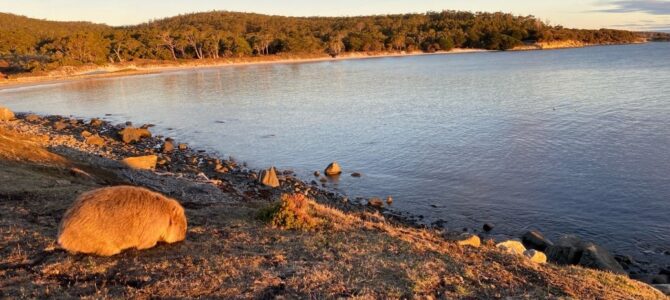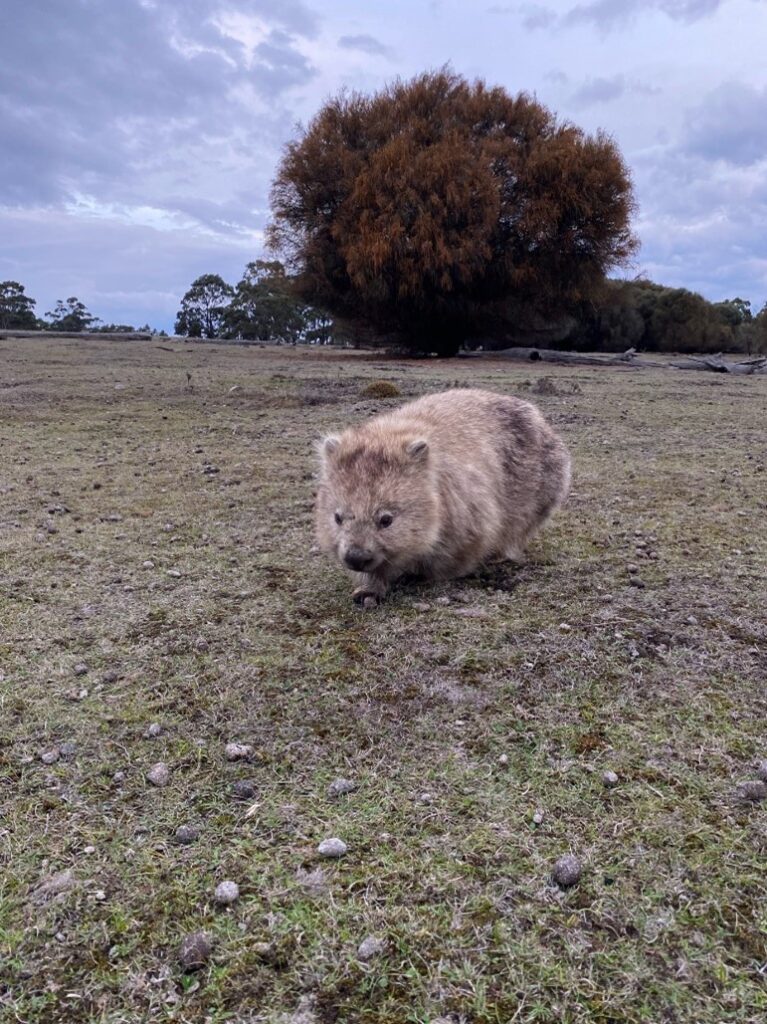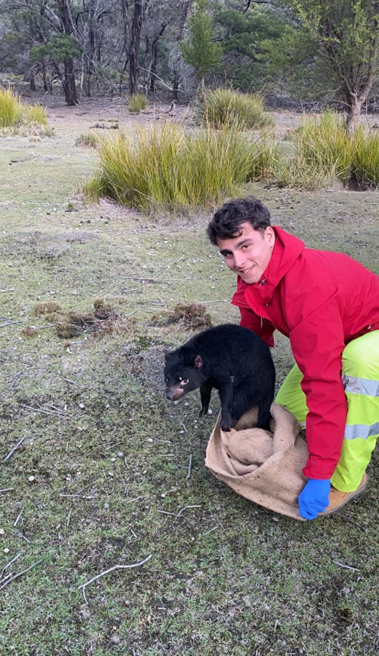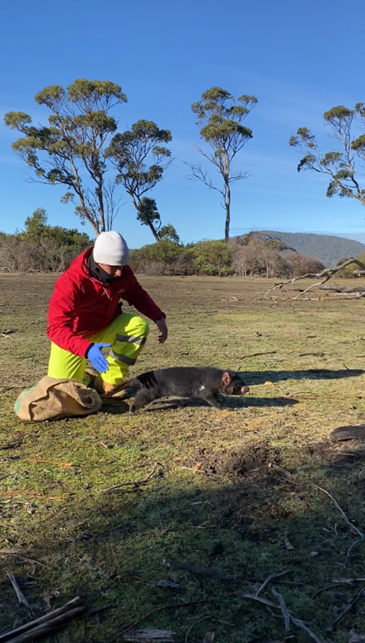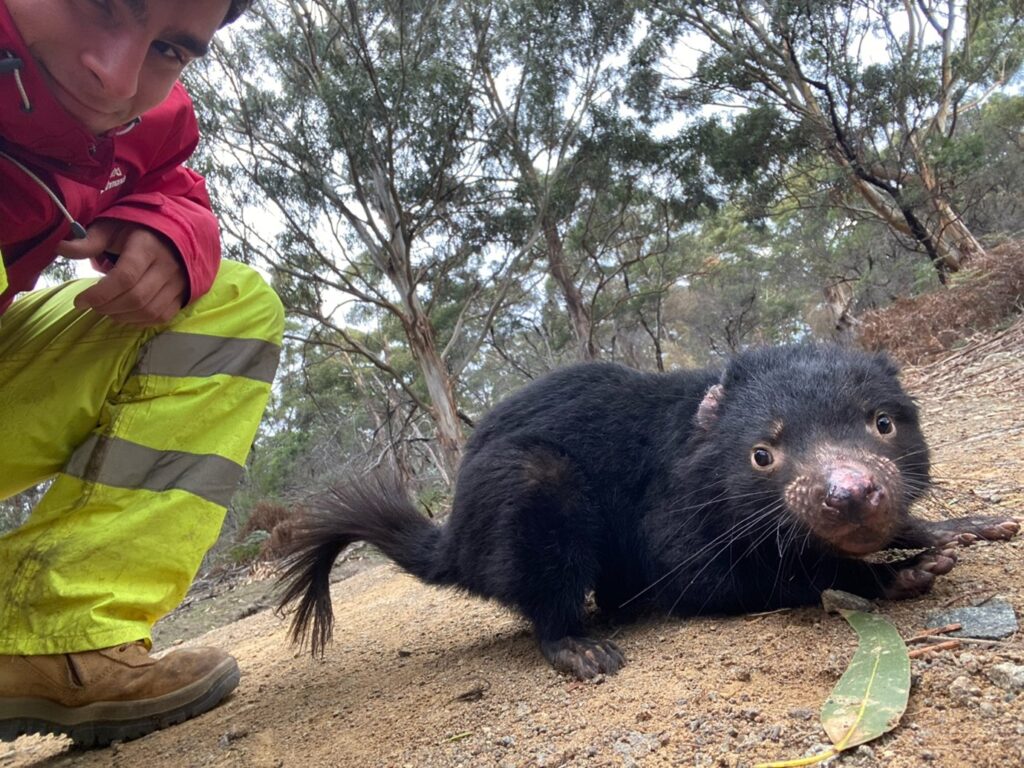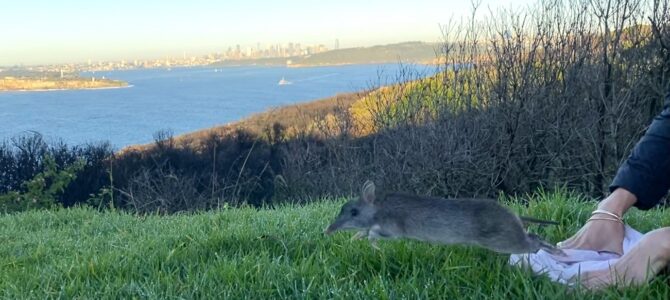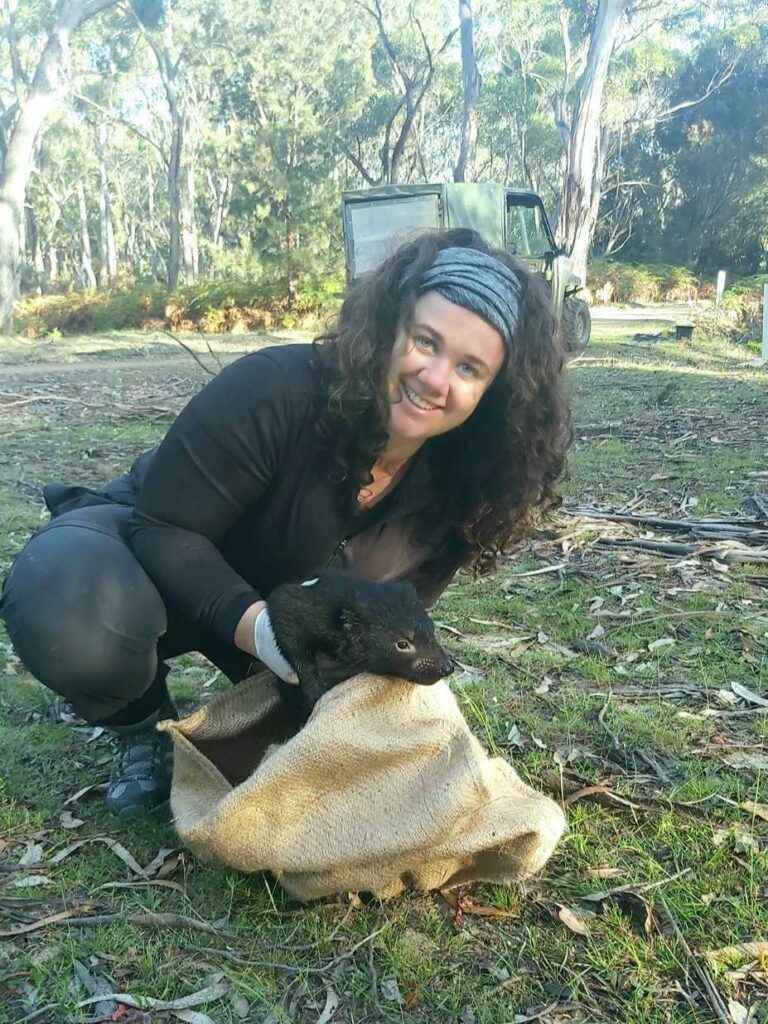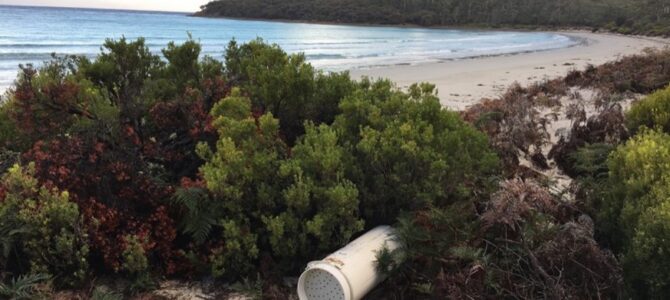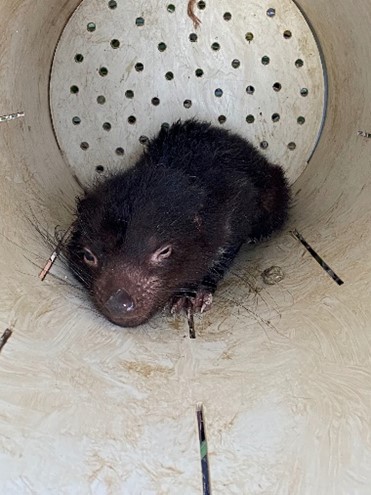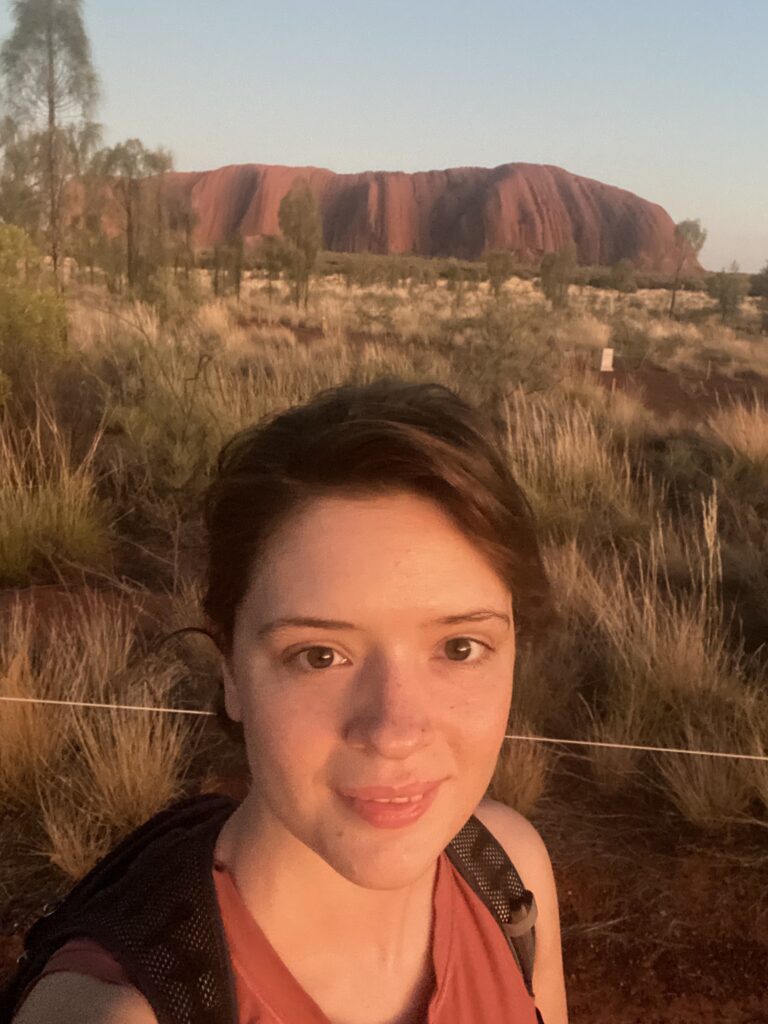by Meadhbh Molloy (PhD Student)
I remember when I learned about the Tasmanian devil and DFTD in my Conservation Medicine textbook as a new master’s student in Virginia, USA. Since I was a child, I loved learning about different animals from all over the world but admittedly, I did know little about the Tasmanian devil. I was inspired by the many amazing researchers that were working on their conservation. I kept thinking about the Tasmanian devil throughout my master’s program and thought that maybe…I can go to Australia…and research Tasmanian devils as well for my PhD (I remember my first Zoom meeting with Carolyn…I was so excited!). After many more Zoom meetings, proposal drafts, a scholarship offer (thank you American Australian Association!), and a pandemic, I finally arrived in Sydney in August 2022. While I was eagerly looking forward to the first time I would see a Tasmanian devil, I have some honorable mentions of the other wildlife I have seen.
The mammals. This is my favorite taxonomic group, so I was most excited to see the mammals of Australia. I’ve seen potoroos scampering about, fruit bats flying at dusk, koalas at a sanctuary in Brisbane, an echidna crossing the road near Royal National Park, and of course the iconic kangaroo grazing right by my camping site in Jervis Bay. The Virginia opossum is our only native marsupial in North America. I was delighted to see brushtail possums (the arguably cuter cousin) in trees and sidewalks in the city, and digging through our food while camping. We also have a mammal that likes to dig through our stuff at campsites- the American black bear. It’s ok! You can put all your food up in a “bear bag” and it (mostly) helps.
The spiders. When I was researching my move to Australia, I came across a blog post titled “Every American remembers their first huntsman spider”. I thought “oh, well I’ll be in a city, they probably don’t get that big, assuming they are even there!”. Wrong. Listen, I appreciate spiders and their ecological role. I know they are probably “more scared of me than I am of them”. That does not mean I was calm and collected when I saw my first huntsman on the bathroom floor. Back at home we have big spiders (mainly wolf) that roam around, but they are no match for a huntsman’s speed! While I’m still a little scared of spiders, my definition of what a large spider is has certainly changed.
All the birds! It’s hard to pick a favorite Australian bird, but I would have to go with the kookaburra (even though one stole the sausage right out of my hands at a barbecue). The first time I heard one, it was 5:30am and I thought a monkey was outside my apartment window. We also don’t have wild parrots where I am from, so my phone is now filled with photos of beautiful white cockatoos and rainbow lorikeets. I remember going on a walk around my new neighborhood within the first few days of arriving. I saw a magnificent bird and told my roommate, Kimberley, about it when I returned. The bird had long legs, a beautifully contrasting white and black body, and was strutting around a park. Upon showing her a photo she said “oh yeah, a bin chicken”. A bin chicken? Not the nicest name. I now understand why they are called that.
I’ve seen many other amazing animals while traveling around Australia, including saltwater crocodiles near Port Douglas, stunning marine life while snorkeling at the Great Barrier Reef, and even a camel when I visited Uluru (it was well-timed that I read “Tracks” by Robyn Davidson before my trip). I happened to feel particularly homesick when I went to Taronga Zoo on a nice spring day, only a couple months after I landed in Sydney. I arrived at the enclosure that I was most excited to see. I have waited a long time to come to Australia, and The Tasmanian devil has morphed from being the topic of one of my research chapters, to being a symbol of resilience and patience for my entire PhD. Immediately, the Tasmanian devil got up from a shady spot and walked across the enclosure to lie down in front of me. Did this little devil know it would be the first devil I would see in person, and knew the weight of this moment? Obviously not, it just wanted to sunbathe. Of all the animals I have seen so far, the Tasmanian devil remains to be my favorite. I look forward to seeing more of Australia’s wildlife before I return to the United States.
Author
Meadhbh Molloy (PhD Student) is characterising the gut microbiome profile of Tasmanian devils at multiple locations across Tasmania
